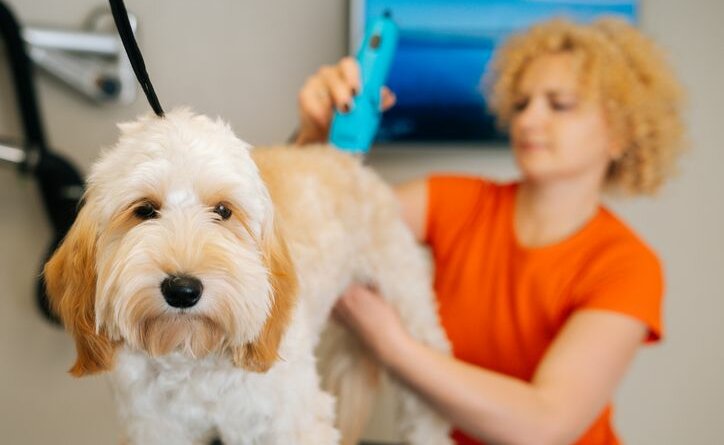Should You Shave a Dog?
If you shaved your dog, don’t panic. While it’s true that there are dog breeds that should not be shaved—and that shaving is not necessary for most dogs—it can be necessary. First, though, it’s important to understand why shaving is not generally recommended for dogs.
Evolutionary Wonders
Your dog’s coat protects his skin from the elements. Long, harsh guard hairs deflect rain and slip right through brambles, while a dense, soft undercoat provides insulation from both heat and cold. If the hair isn’t matted or tangled, air can move freely through the layers of the coat to provide ventilation. The dog will shed excess undercoat in the summer to help free up additional space for airflow and bulk up again for extra warmth in the winter.
Dog breeds selected for companionship often have longer or softer coats that are more pleasant to pet and attractive to look at, but they are also higher maintenance. Dog breeds developed to serve a working purpose, such as herding, hunting, and sled dogs, typically have a more natural coat that protects the dog from harm.
Dog Breeds That Should Not Be Shaved
A full-body shave is not necessary for most dogs. Shaving a double-coated dog, such as a Samoyed, German Shepherd Dog, or even Golden Retriever, is generally not a good idea. Shaving removes the insulation his body is used to and exposes the skin to the sun, sticks, and branches.
Shaving a dog’s coat to the skin can damage hair follicles, increasing the risk of ingrown hairs, and potentially alter the texture of the hair.
Instead of shaving your dog, brush him regularly. This removes dead hair, promotes healthy skin, and enables good air flow through the coat. This is the best way to help most dogs stay cool in the summer (as well as providing water and shade, of course!).
When Shaving Is Needed
Shaving your dog may be necessary in some situations:
- Thick mats or tangles that would be painful to remove by hand
- Hot spots and skin infections
- Medical procedures like surgery or placing a catheter
- Health or behavioral conditions that alter the skin and coat or prevent normal grooming
If you have a dog with a thick, dense, or long coat and live somewhere with hot, humid summers, shaving his belly may help with cooling. Shave his underside to provide extra ventilation, leaving the coat on his back and sides to protect him from the sun.
Dogs with continuously growing hair, such as Poodles and Poodle mixes, and dogs with extremely long hair, such as Shih Tzu and Cocker Spaniels, do benefit from regular haircuts. Trimming that long, soft hair to a shorter length prevents tangles if you aren’t up for daily grooming. But, still, shaving down to the skin is still not necessary for a healthy dog.




